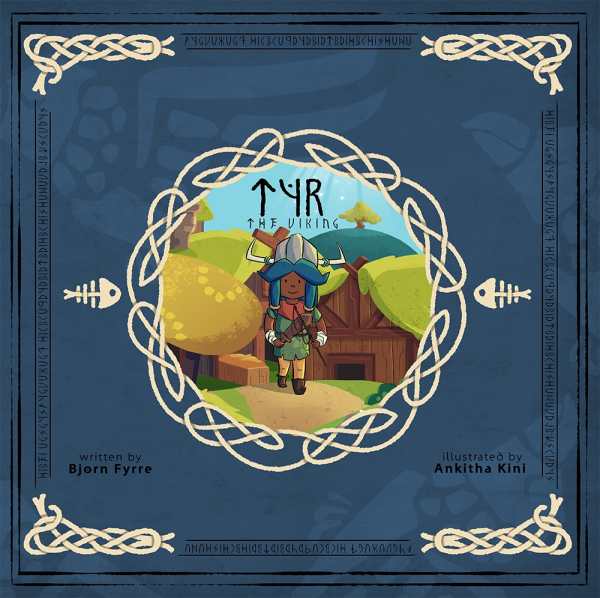Tyr the Viking
The supportive picture book Tyr the Viking subverts stereotypes in its tale of an admired Viking boy grappling with his feelings following a swordplay loss.
Bjorn Fyrre’s third book in the Little Viking series, Tyr the Viking, is a charming picture book about processing uncomfortable feelings and the vulnerability that develops from such expression.
Tyr the Viking is known as the best sword fighter in his village. Thus, Tyr is surprised when a girl, Klippe, beats him during their spar. This unexpected defeat leaves Tyr feeling doubtful of his abilities. His rejection of these feelings is illustrated through the growing tension he experiences. But when he is confronted by a group of village children about Klippe’s win, Tyr learns that nothing positive comes from avoiding his feelings—in fact, it often causes pain for others.
Near the end of the book, Tyr wrestles with how much his self-perception is connected to the opinions of his village. He resolves his inner conflict by way of a conversation with Klippe and his friend, Trae, demonstrating healthy emotional sensitivity. This is the book’s highest thematic element: using a hypermasculine Viking figure as a means of teaching social and emotional skills. However, it is unclear whether Tyr’s frustration with Klippe’s win is related to patriarchy and the gender norms it inspires; the root of Tyr’s tension is underdefined.
The illustrations’ unique artistic style—with creative takes on traditional Viking wear, detailed spot illustrations, river landscapes, and shadowed animal figures—makes the book visually engaging, even interactive. The drop cap typography mimics Nordic runes—a keen touch. Further, the back matter includes an explanation of the book’s themes alongside helpful suggestions for shepherding social and emotional conversations, making the book a good educational resource.
Grappling with the nuances of emotions, the tender picture book Tyr the Viking normalizes and encourages labeling one’s difficult feelings rather than avoiding them.
Reviewed by
Brooke Shannon
Disclosure: This article is not an endorsement, but a review. The publisher of this book provided free copies of the book and paid a small fee to have their book reviewed by a professional reviewer. Foreword Reviews and Clarion Reviews make no guarantee that the publisher will receive a positive review. Foreword Magazine, Inc. is disclosing this in accordance with the Federal Trade Commission’s 16 CFR, Part 255.

